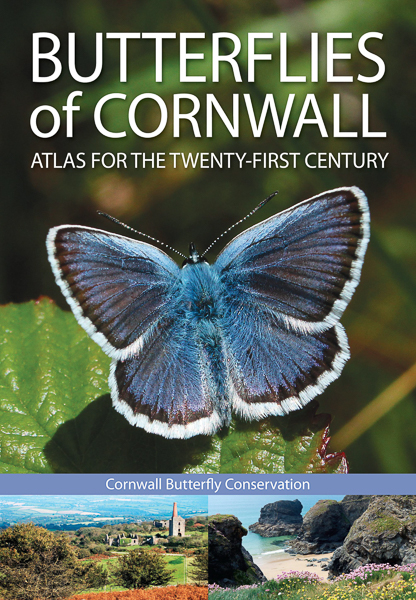 |
Packed with information and photographs, Butterflies of Cornwall will be the go-to book on the state and status of butterflies from Bude to Land's End. The book maps the ebb and flow of butterfly populations in Cornwall, including national rarities, such as the Marsh Fritillary, Silver-studded Blue, Pearl-bordered Fritillary and Heath Fritillary, whose strongholds we must safeguard. Even the more familiar Small Tortoiseshell, in decline nationally as well as locally, calls for our help. Butterflies of Cornwall has been produced by the Cornwall branch of Butterfly Conservation, the national charity that works to protect Britain’s butterflies and moths. A lifelong conservationist, HRH The Prince of Wales, Duke of Cornwall, provides a foreword. This book will appeal to butterfly enthusiasts of all ages and experience, and to anyone who lives in or visits Cornwall.
With the advent of digital record keeping and photography, the wealth of data and images of British butterflies now available has led to an extraordinary rise in the quality of county butterfly atlases over the last few years, and the newly published Butterflies of Cornwall stands up there with the best of them. Published by NatureBureau, the book follows a fairly typical structure - an introduction placing the county's butterflies in their wider context, a chapter on the Cornish environment, followed by one on recording, and then the species accounts which make up the bulk of the text. After this comes a short section on the butterflies of Scilly, and a useful dossier of the best butterfly sites in the county.
The approach is appealingly thorough and systematic throughout - the most productive butterfly sites were identified for the last chapter using records from the county database, while the second chapter on the Cornish environment uses Natural England's National Character Areas to explore different areas of the county and their butterflies one by one. These structures give the text a rigorous and authoritative feel, something that is reinforced by its frequent references to the scientific literature on the species it describes. It does this without getting bogged down in jargon, with clear, concise explanations of some challenging concepts, for example metapopulation structures while discussing Marsh Fritillary, a species for which these dynamics are particularly important.
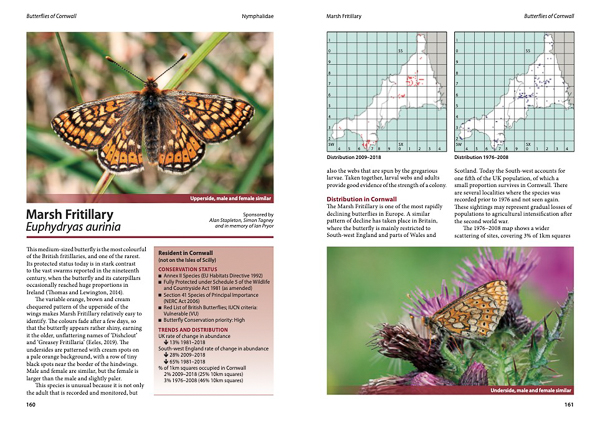 |
This is not to say the book is just a bland and systematic account though - throughout the text there is extra information that adds colour and detail to the picture presented of the county's butterflies and highlights the most interesting and unusual features of Cornwall as a county for butterflying. Good examples include the chapter on Scilly's butterflies, discussing some of the surprising absences from the local fauna, and the possible reasons for them, while the species accounts don't just provide a generic description of each species' life histories, but are full of interesting details about their ecology in Cornwall and how this differs to other parts of the country. A good example of this is the interesting discussion of the colonisation of coastal grasslands by Marsh Fritillary and the parallels with its rise on chalk grassland elsewhere.
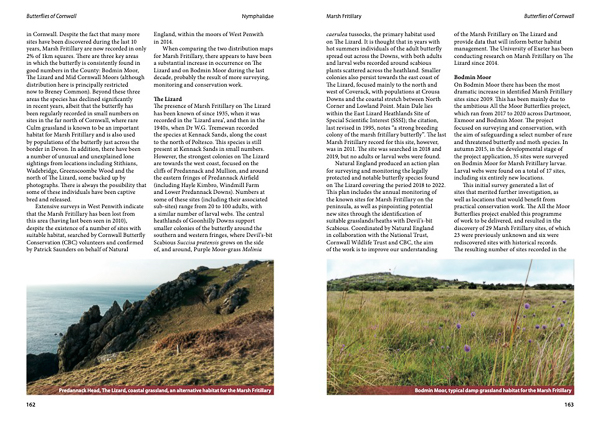 |
The species accounts are full of detailed observations and are extra-long for the county's key species (Silver-Studded Blue gets six pages and Marsh Fritillary eight, for example). This enables the authors to combine information about each species' ecology and conservation with data on their distribution and trends, presenting an extremely complete picture of how each species is faring in Cornwall. The authors' intimate knowledge of key species and their sites is apparent throughout - for example, a detailed description of the loss of Marsh Fritillaries from Goss Moor is balanced by an uplifting account of the many new colonies discovered on Bodmin Moor during Butterfly Conservation's ‘All the Moor' butterflies project. The minutiae don't make the species accounts dry though, as the writing and use of habitat images vividly conveys the sense of each place and the butterflies in them - a favourite example of this for me was the delightful image of Silver-Studded Blues using the bunkers of old explosive works at Upton Towans for shelter.
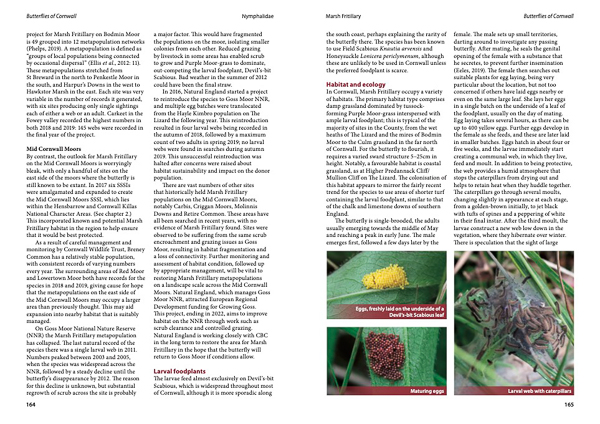 |
Indeed, although the book is impressive for the way it highlights the key features of butterflying in Cornwall, and how it has assembled so much local knowledge, it avoids becoming parochial and bogged down in regional details. Throughout, the butterflies of Cornwall are placed in their broader context, as the introduction discusses why the study of butterflies is important in the first place, and the chapter on the Cornish environment presents a wonderfully layered picture of the county's butterflies, starting with an excellent explanation of Cornwall's fascinating geology, and how this drives variation in flora and, in turn, butterfly communities across the region. How human activity has affected this picture is covered too, with discussion of past mining activity and its creation of some of the county's best butterfly sites.
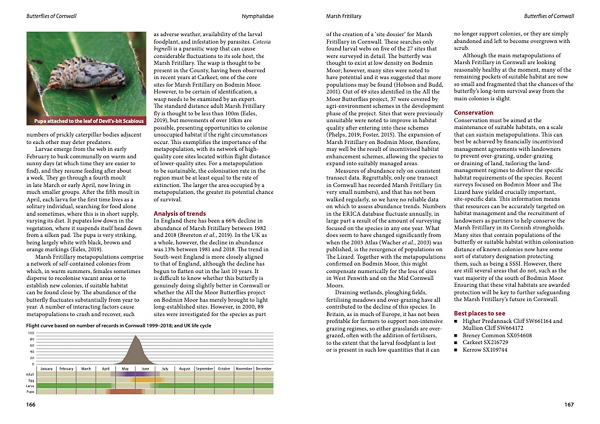 |
Inevitably, written by volunteers with limited time and resources, there is some compromise involved in producing the book, and some information and discussion that it might be nice to have seen has been omitted. The species accounts, for example, give little space to vagrant species and those not resident (but recorded occasionally or recently extinct) in Cornwall, which seems a shame given how dynamic the distributions of many species are proving in the face of climate and habitat change. Similarly, the otherwise excellent site guide at the end of the book provides a list of the key species at each site, but no specific information on how to find them once there.
The book is produced by NatureBureau (of the ‘Butterflies of Sussex' and the ‘Butterflies of the West Midlands') to their usual high standard, and production and photography is excellent throughout. This is a superb book that provides a wonderfully detailed account of the butterflies of Cornwall, bringing them vividly to life and placing them neatly in their broader context, making for a truly modern and robust text that certainly lives up to its billing as an ‘atlas for the twenty-first century'.